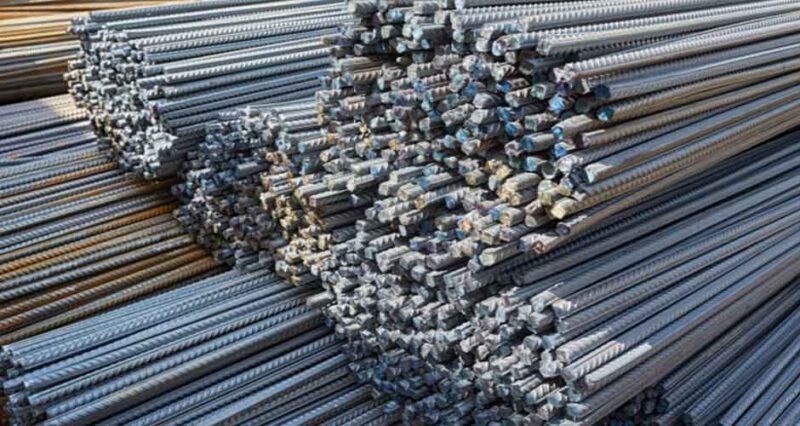
Ever wondered why buildings stand so tall and bridges span such vast distances without collapsing?
The answer often lies in the types of steel beams used in their construction. These beams are the unsung heroes supporting structures all around us, making our modern way of life possible.
In this simple guide, we’ll break down the different types of steel beams, providing you with essential insights on how these beams work to keep us safe and expand the possibilities of architecture and design.
I-Beams (Or H-Beam)
The I-Beam, also known as an H-Beam, is a common type of steel beam used in the construction of buildings and bridges. It has a cross-section that looks like the letter “I” or “H,” which is where it gets its names from. This shape provides the beam with a high level of strength and rigidity, making it perfect for supporting heavy loads.
Due to its design, the I-Beam is especially good at bearing weight in one direction. This makes it ideal for use in the framework of structures, where it can support floors and roofs.
The material efficiency and load-bearing capabilities of the I-Beam also help to reduce construction costs and time. If you require high-quality steel beams for your project, contact the best steel suppliers in your area.
Wide Flange Beams (W-Beam)
The Wide Flange Beam, often referred to as a W-Beam, is another type of steel beam used in building and bridge construction. It features a cross-section that provides a wide surface area on the top and bottom, which helps distribute weight more evenly. This distribution makes the W-Beam very effective in carrying loads and resisting bending.
W-Beams are recognized for their versatility in various construction projects. They can be used in the framework of buildings, as well as in the construction of bridges. Their wide flanges offer greater stability, making them suitable for longer spans where support is crucial.
Hollow Steel Sections (HSS)
Hollow Steel Sections, often referred to as HSS, are steel beams that come in a variety of shapes including square, circular, and rectangular. These shapes allow for a range of construction uses, from framing to support structures. HSS is known for its strength and durability, which makes it a reliable choice for many building projects.
The design of HSS beams provides a high strength-to-weight ratio. This means they can support a great deal of weight without being excessively heavy themselves. Additionally, their hollow nature allows for easier installation and maintenance, as well as the potential for running utility lines through them, making HSS a practical option in modern construction.
Channel Beams
A Channel Beam is a steel beam that has a U-shaped cross section. It is often used in construction for frames and supports because of its shape. The two longer sides of the U provide a stable base that increases the strength of the structure it supports.
The Channel Beam’s design allows it to be used in a variety of construction projects. It is particularly useful for columns or as part of the floor system. Its shape makes it easy to attach to other structures, which can be important in complex building designs.
Angle (L-Shaped) Beams
Angle Beams, which are also called L-Shaped Beams, have a cross-section that looks like the letter “L” because it makes a 90-degree angle. Because it has two support lines, this shape is great for making the corners and edges of buildings stronger. Because of its unique shape, which makes it more stable, it is often used in frames, shelves, and even building brackets.
The Angle Beam is great for situations where you need structural strength in more than one way because it supports on two sides. It can be found a lot in both home and business building jobs. The simple form of the Angle Beam also makes the building process easier by making it simpler to put together and place.
Tee Beams (T-Beam)
The Tee Beam, or T-Beam, is a steel beam with a T-shaped cross section. This design features a top flange attached to a vertical stem, giving it the appearance of the letter “T”. It is commonly used in construction projects where beams are needed to support floors and roofs.
T-Beams are effective in distributing the load more evenly across their structure. The shape of the T-Beam allows it to handle a considerable amount of weight, making it a reliable choice for builders.
Single Girder Beams
A Single Girder Beam is used in construction to support structures over wide spans without the need for columns in the middle. This beam is made of a single piece of structural steel, making it simpler but very strong. It is often used in the roofs of warehouses, factories, and large commercial buildings where large open spaces are needed.
Due to its design, the Single Girder Beam can carry a lot of weight, despite being relatively lightweight itself. It is engineered to resist bending and twisting forces, ensuring stability and safety for the structure it supports.
Double Girder Beams
Heavy-duty building projects need double-girder beams to work properly. They are made up of two plates that run parallel to each other. This makes them much stronger and better able to hold weight and resist outside forces. Because of this form, they are often used in places where power and reliability are very important, like on overhead crane runways and in big industrial buildings.
When compared to single-girder beams, double-girder beams have longer spans and can hold more complicated lifting systems and devices. Because of this, they are the best choice for places that need to be very efficient and lift a lot of weight.
Exploring the Diverse Types of Steel Beams
In conclusion, the world of construction is vast and complex, but understanding the types of steel beams simplifies it a bit. Each beam, unique in its design, serves a special purpose, from holding up buildings to supporting bridges.
Knowing what each beam does best can help make building projects stronger and safer. Just remember, when it comes to building something to last, choosing the right kind of steel beam makes all the difference.
Did this article expand your knowledge? If so, don’t forget to visit our blog for further educational material.

